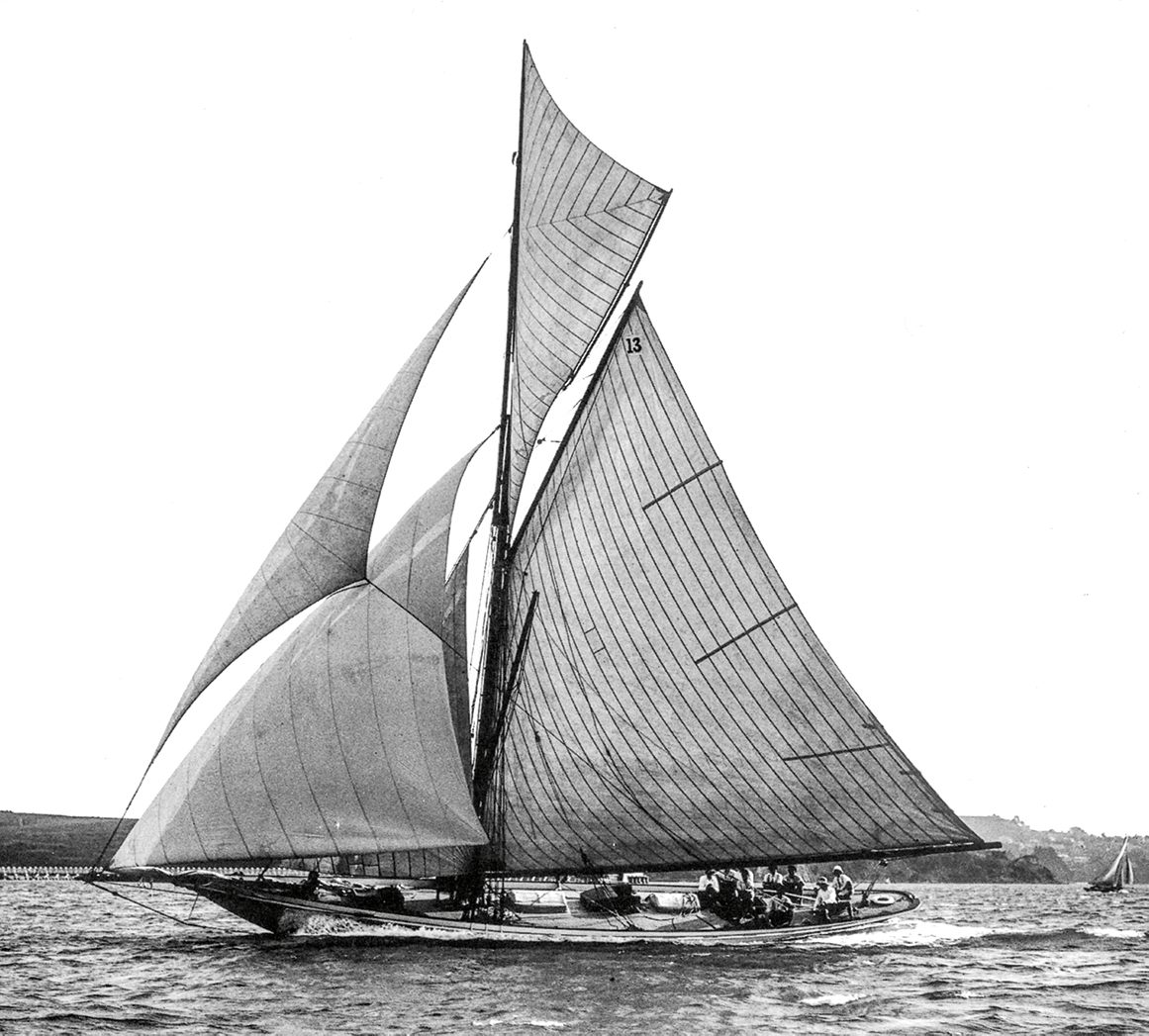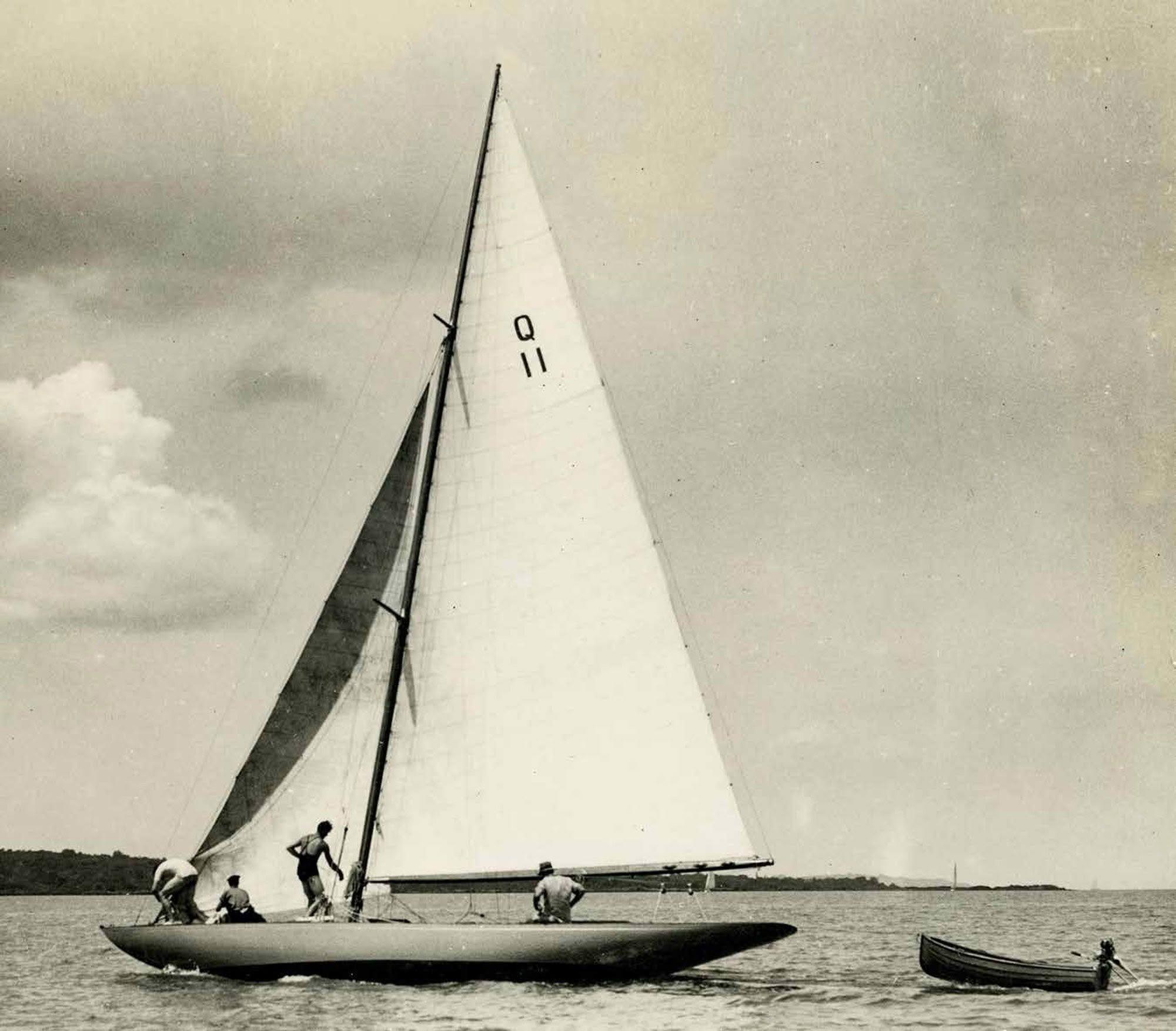

Brothers Sam and Frank Jagger were born in Halifax, Yorkshire in 1840 and 1843 and came to New Zealand in 1858 working on the Kaipara and then in the South Island goldfields. In 1862 they established a timber, coal and firewood business in Auckland, becoming shrewd, hard-headed Yorkshire businessmen in the thriving new city.
Sam owned and skippered the 25-ton cutter Gazelle carrying the firewood from the Great Barrier. In 1865 he married Harriet, the eldest surviving daughter of Thomas Hancock, a prosperous Auckland brewer, also from Halifax. In 1870 Frank married Jane Hancock, Harriet’s youngest sister.
The brothers’ business interests rapidly diversified and prospered, particularly in coastal shipping and timber milling. Frank Jagger had a successful wool and tannery business and owned Waitoa with W.J. Parker of the Parker-Lamb Timber Company along with several other steamers, scows and fishing boats.
The sons, from their late teens, contributed to the flourishing of Auckland’s fleet of racing yachts by building the important yachts Constance (1891), Ida (1895), Thelma (1897) and Victory (1906), which will feature in a later article.

Going back to Capt. Hewson and his tragic drowning at Clevedon: his wife Ellen received huge assistance from the Masonic Lodge in which the menfolk back, at least to George Berkeley Hewson, had been prominent, but times were still very tough.
Her 18-year-old son Arthur was already working for the Jaggers. By 1918 he was a senior member of Frank Jagger Ltd, tanners and leather merchants. In 1918 he was booked to go to Sydney on the Union Company’s liner Niagara but missed it through ill-health. He caught the next ship, the Huddart Parker Wimmera, which struck a German mine off Cape Maria van Diemen on 25th June. Arthur was one of the survivors. I wonder if he thought of his father on that day?

Arthur was also an enthusiastic Ponsonby yachtsman, a member of the Auckland Yacht Club, the forerunner of the Royal New Zealand Yacht Squadron, when sailing with the Jaggers on their galaxy of fine raters. He bought the Clare-built patiki Maka Maile from Arthur Clare in 1899 and the Bailey 24ft mullet boat Hinemoa (ex Mizpah) in 1901. He became a founder member of the Ponsonby Cruising Club and its Secretary in 1901.
He was primarily responsible for carrying out the correspondence with Sir Thomas Lipton that resulted in Sir Thomas presenting the magnificent Lipton Cup in 1920 for competition by 22ft mullet boats, first raced for in April 1922. Arthur died only a few weeks later.
His friends banded together and presented the Hewson Memorial Cup to the Ponsonby Cruising Club, originally for competition in the 14ft X Class, first won by Jack Gifford’s Rona. Later the cup was allocated to the Z Class and, these days for keeler racing.
Capt. Hewson’s second child was Augusta Ellen born in 1880. She married Arthur Percy Clare of St. Mary’s Bay from whom her brother Arthur had bought Maka Maile. With his brother William, Arthur Clare took over the business when his father died in 1902. They were joined by Charles Collings shortly after. The firm later gained great renown as Collings & Bell.

The third child was George Berkley, born 1882, who became a bricklayer and builder and was elected as Birkenhead Borough councillor for many terms in the 1920s and 1930s. The fourth child was Gertrude Sarah, born 1884, who married into the Bell-Booth family which produced a number of fine yachtsmen and launch owners.
Hilda May (1886) and Millicent Ivy (1889) came next followed by two boys, John Clarence (1891) and Horace Netland (1893). After their father drowned in the February, Carrick Leslie was born on 1st November 1896.
John Clarence Hewson took a very similar path to his brother Arthur and spent most of his adulthood in public life. In 1903, at the age of 22, he joined the Royal New Zealand Yacht Squadron, less than a year after it had received its Royal Warrant.
By the AGM of 1907 he was elected as Hon. Secretary and was responsible for the running of the Rudder Cup Ocean Race for launches in 1908, around Sail Rock and back at night, which was re-enacted by the Classic Yacht Association in 2008. For his industry he was elected to the Committee of the Auckland Anniversary Regatta in 1912. He joined the staff of the Auckland Harbour Board in 1910, so he was right in the centre of maritime activity in Auckland.
In October 1916 he applied to join the RNZYS-sponsored drive to recruit yachtsmen and launchmen for RNVR duties, both as navigation officers and engineers, mainly on the Elco-built Motor Launches (MLs) patrolling in the coastal waters of Great Britain and the Mediterranean.

Seventy-five officers and seventy-five mechanics were selected in the initial batch and went on to serve with the RNVR with great distinction. J.C. was posted to Gorleston, near Great Yarmouth in Norfolk which had recently been bombarded by units of the German High Fleet. On his return he took up his former roles with RNZYS and the Regatta Committee. He was largely responsible for establishing the Tauranga Race as a viable annual event in 1922. He remained closely associated with the Squadron and the Anniversary Regatta until he retired in the 1950s.
The next brother, Horace Netland Hewson, known as ‘Horrie’, worked for Frank Jagger’s leather works after leaving school. By 1922 he was employed by John Burns Ltd in the ship chandlery department at its four-storey building in Customs Street East. He was the staff member who received and collated entries for the Anniversary Regatta and most of the Auckland yacht clubs’ races, a great source of prestige for the firm among the yachting fraternity. An able and well-regarded businessman, he rose rapidly to become the General Manager of the company.

In 1922 Horrie bought the smart 37ft launch Jeunesse from W.J. Harper, a saddler and harness maker of Ring Terrace, St. Mary’s Bay. Harper had commissioned Jeunesse from Dick Lang, of St. Mary’s Bay in late 1918 to replace his Logan Bros launch Kotiro. Because of the Spanish Flu pandemic she wasn’t launched until Easter 1919. With her big American 40hp Reutenberg marine engine and twin cabins she was fast and able to cruise with ladies aboard.
During the transaction, however, Horrie became smitten with W.J. Harper’s daughter, Marjorie. They married in March 1923. The New Zealand Aquatic magazine reported that, “Mr. H. Hewson, a prominent Auckland yachtsman, joined the ranks of benedicts last Tuesday”, a ‘benedict’ then being a jokey term for a long-term bachelor who has succumbed to marriage. Unfortunately Jeunesse had to be sold to pay for the engagement ring and to set up home. Later in life, Horrie and his son Murray had two more launches they named Jeunesse on Lake Taupo.

During WWII Horrie managed John Burns through the disastrous fire of August 1941 when the Customs Street building was gutted and its valuable stocks destroyed. He then performed a vital role in sourcing and supplying the vast amount of chandlery and essential materials required by the New Zealand boatbuilding industry. It geared up rapidly to produce a wide variety of vessels for war work, ranging from the large wooden Fairmile patrol vessels for the Navy to wooden and steel tugs for the United States Navy.
Horrie worked through the rest of the war closely and effectively with his younger brother Carrick Leslie Hewson, who was born in 1896, after their father drowned off SS Waitoa. Carrick had fought at Passchendaele in WWI and been a Territorial between the wars. Now he was appointed Major and in charge of supply for the Army Service Corps in the Northern District.
With such a large and energetic family, it has been difficult to compress the facts into a reasonable compass. I do hope that Boating NZ readers have been able to appreciate the breadth of the Hewsons’ contribution to our sport in boatbuilding, sailing and its administration.




